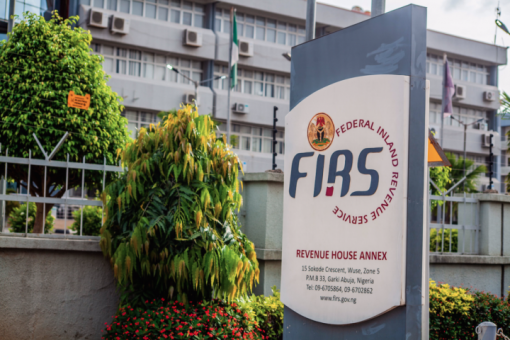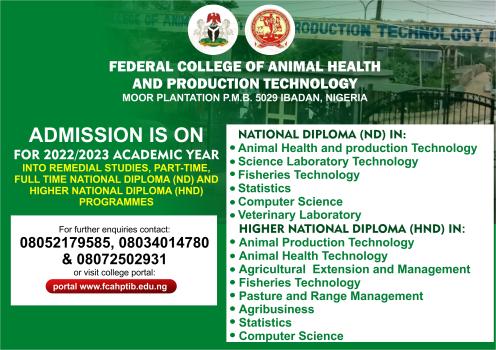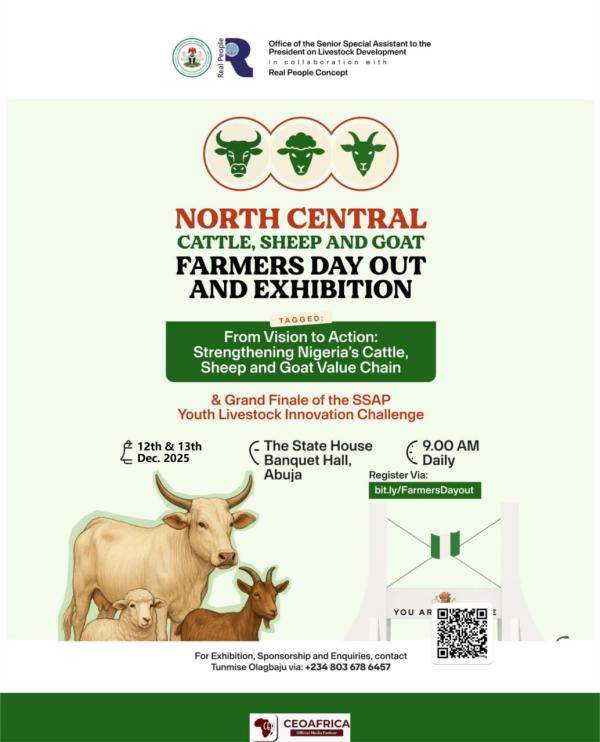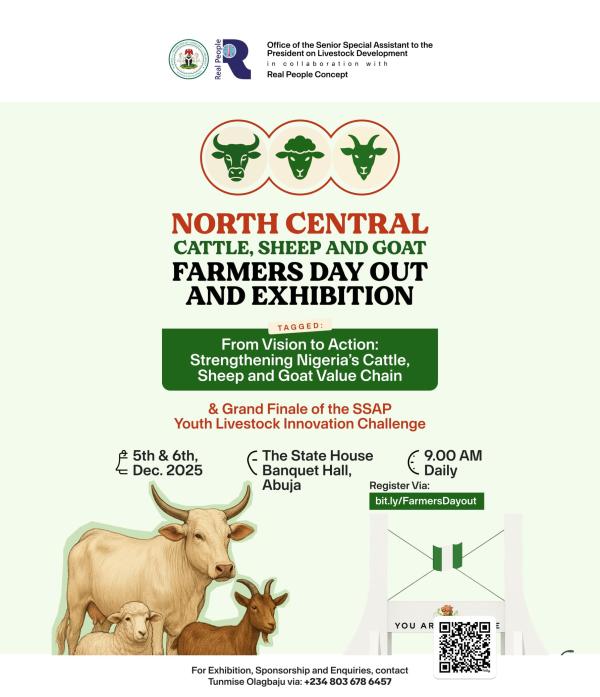
The notion of farming being a venture only resorted to by the unenlightened ones is a big fallacy which even the unemployed are guilty of. It is no gainsaying today that poultry farmers in Nigeria have pushed back the frontiers of the micro business environment and are leveraging on the immense opportunites that abound in the industry.
Industrial wise, the city of Ibadan, located in the Southwest of Nigeria is eons behind cities like Lagos, Port-harcourt and Abuja. However, when it comes to the trade of day old chicks, Ibadan had roughly one-third of the total number of hatcheries in the country. Poultry farmers throng the city of Ibadan each week just to buy day old chicks and then go back to their respective destinations. I once had a conversation with a poultry merchant who revealed to me that Ibadan unknown to many was a hub where millions of naira was being generated weekly courtesy of poultry farming.
Now back to the raw deal, grasscutter farming is a virgin in the kingdom of livestock and yet to be fully exploited in spite of the enormous potentials that abound in it. Did you know that grasscutters are native to West-Africa? Yes! Other regions have only taken initiative by breeding them in their own terrains.
Also known as the Greater Cane Rats, they belong to the rodent family and is one of the two species of the cane rat. The cane rat lives by reed-beds and riverbanks in Sub-Saharan Africa. Cane rats can grow to nearly 2 ft (0.61 m) in length and weigh a little less than 19 lb (8.6 kg). It has rounded ears, a short nose, and coarse bristly hair. Its forefeet are smaller than its hind feet, each with three toes.
Cane rats live in small groups led by a single male. They are nocturnal and make nests from grasses or burrow underground. Individuals of the species may live in excess of four years. If frightened, they grunt and run towards water. So far, their conservation status is lower risk.
With the urge to push back the frontiers of industrialization, the cane rat's native habitats were encroached upon and the cane rats likewise expanded from their native reeds into the plantations, particularly the sugar cane plantations from which they derive their names. Their tendency to adopt plantations as habitat, where they feed on agricultural crops such as maize, wheat, sugar-cane and cassava, often earns them the label of agricultural pest.
Grasscutter farming is highly profitable and extremely lucrative than you imagined. The meat has an excellent appeal and is consumed all over West and Central Africa, making it one of the most sought after victuals in high demand in the market. A grasscutter is sold between N4,000 to N5,500 depending on the location of the market. One thousand grasscuters in a year could earn you between N4 Million to N4.75 Million.
The animal reproduces very quickly and in good numbers. A fully grown female grasscutter after gestation carries the pregnancy for 140 – 150 days and reproduces twice a year. Each pregnancy produces average of four to seven young ones per birth and atimes could even exceed that. That means one female grasscutter could produce 8 – 20 other grasscutters in a year.
A fully mature female or male that is ready for market weighs between 3.5kg for the female and 4.5kg for the male. While measuring 45cm to 60cm in body length. The standing height is between 25cm to 30cm. The body size of a fully grown male is about the size of a nine inches block.
A good number of grasscutters are consumed yearly but most of them still come from the wild through hunters who goes into the bush to hunt for them. Like other rodents, grasscutters could be very nifty thus; making them quite arduous to hunt. The animal’s victuals are quite rare in the market.
HOW TO START AS AGRASSCUTTER FARMER
Most people often feel disillusioned whenever it comes to the rearing of animals due to the cost implications. While the cost of starting a colony of grasscutters could be within the range of #70,000 to #80,000, it should be noted that the cost of rearing them could be much lower considering the fact that they are herbivores. Depending on the financial wherewithal of the farmer, the feeding of grasscutters with processed food is more like a luxury. Grasscutters are good to go with herbaceous legumes such as elephant grass and napier grass. If available, they can also be fed with basic food crops such as grains and sugar cane. Below is a breakdown of the annual cost likely to be incurred by a grasscutter farmer:
1 colony – (4-5 grasscutters comprising of a single male) = #70,000 to #80,000
Starting with 5 to 6 colonies = (25 - 30 grasscutters =N350,000 - #480,000)
Cage / Housing = N75,000 for 5 families and N90,000 for 6 families
Food supplements (soya bean, crush animal bone, PKC ) = =N= 30,000 to #50,000/ year
TOTAL = =N= 455,000 to #600,000
Expected Income in (Naira ) = N=
1 female gives birth to an average of 5 animals within 6 months
4 females will give you an average of 20 grasscutters within 6months
20 grasscutters x 5 families = 100 grasscutters within 6 months
In 1 year, you will be expecting about 200 grasscutters.
The grasscutters weigh between 6- 10kg at maturity
Let’s assume you sell each for =N= 6,500
6500 x 200= =N=1,300, 000.
FACTS TO CONSIDER
1. You spent =N= 70,000 to buy your parent stock (breeding stock) @ =N= 14,000 per grasscutter, why should you sell for less? I mean the breeding stock.
2. In the 2nd year you will not be concerned with housing and buying breeding stock, which invariably increases your profit margin.
3. Grasscutters rarely get sick. The cost of treatment is negligible. For example when they have dysentery ( running stomach) You administer chalk coal.
4. Note that grasscutter as a delicacy is for the rich and it is in very high demand at restaurants, fast food outlets, hotels, and pepper soup joints and would be grasscutter farmers like you.
5. Breeding stock is more expensive than the fully grown animal.
6. Mortality rate in grasscutter is very low
7. Risk level is very low
8. Grasscutters have been known to litter (give birth) 11 offspring in some cases so using 3 offspring in the estimate above is just to be very very conservative. You will certainly see much more than 4 grasscutters in some cases.
9. There is joy in owning a grasscutter farm.
10. Grasscutter business is an inheritable business that if properly managed; it may out-live the owner and pass on to the next generation.
11.The cost of feeding is very low compared to that of poultry, piggery or fish farmi
Like most animals known to live in groups, grasscutters are also known for their territorial tendencies and would want to have a dominant male. When breeding a colony of grasshoppers, it is always ideal to say three to four females with only a male. Another colony could then be made of a similar female to male ratio.
Grasscutters are basically reared for meat production and thus need to grow healthily in order for them to be profitable in the long run. This is the more reason why each colony must have a healthy male to foster quick reproduction.
In any case, both the male and female stock you are selecting for breeding purpose must be healthy. While a healthy, strong, agile male animal should be selected for breeding programs, the genetic wellbeing of a female is also important and will affect the breeding stocks. To ensure that you achieve the best possible result, both has to be healthy.
Grasscutter don’t sleep where they eat! If you are providing them house you must put this factor into consideration – either cage or house, you must provide steeping place and dinning and playing place.
One important factor that should be put into consideration when building cages for grasscutters is space. A spacious cage affords these rodents the pleasure of exercising themselves and bringing their bush instincts to the fore. This covertly contributes to the health of grasscutters. They can be breed either in properly built cages or in a house specially designed for them. Grasscutter is sensitive to good habitat, for a colony (1 male and 3 females) the dimension of the cage should be 180cm in length, 60cm in width and 45cm in height. Build your cage that way, separate for each colony.
When using walled pen or house, make sure you build it in such way that the place they eat must be separate from where they sleep. Also the production building must be designed to protect the animals from excess temperature and humidity.
Soldier ants and snakes are the major predators likely to pose threats to your colonies of grasscutter. Make sure their house are built is a safe place and you must also be wary of human thieves. To protect them from the invasion of soldier ants, you may pour black engine oil around their houses, especially at night during raining season mostly.
The floor should be overlay with dry soft grasses to protect their feet from being hurt and to provide them soft cushy playground condition. .
You can also fatten the male with broiler’s finisher
or broiler starter’s feed to help attain market weight within short
period of time. Considering their natural habitats which are usually in burrows, grasscutters are not really too comfortable with cold environments. The rooms or cages where these rodents are reared should be kept warm. Environment that is suitable for human is considered suitable for grasscutters.






















